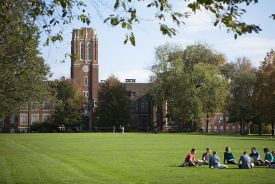Teen Smokers May Struggle With Body Image Issues
ByNew research from Concordia University suggests that many teens who smoke may also have body image issues, Medical Daily reported.
Researchers found that levels of body-related guilt and shame were lowest among those who exercised regularly and never touched a cigarette.
"Guilt and shame are two distinct entities," Erin O'Loughlin, a researcher with Concordia's Independent Program (INDI) department, said in a statement. "Shame is tied to self-perception and self-esteem, and reflects a negative evaluation of the self. Guilt has more to do with your actions and reflects a negative evaluation of a specific behavior -- in this case, smoking. Guilt may elicit reparative action such as being physically active, and it may be what is driving young smokers to get moving."
For the study, researchers collected and analyzed survey results from more than 1,000 young people -- smokers and non-smokers, mostly aged 16 or 17 -- whose level of physical activity was compared to current Canadian Physical Activity Guidelines and Canadian Sedentary Behavior Guidelines.
They found that active smokers who met the guidelines reported higher levels of body-related guilt. The unhealthiest group -- non-active smokers -- reported higher levels of body-related shame, The Gazette Review reported.
But the compulsion to exercise exhibited by the smoking test subjects tended to be tied to a desire to bulk up, especially in males. The findings reflect a trend among young men who desire a more muscular physique: a higher percentage of the active smokers were indeed male, and reported trying to gain weight.
"The irony is that the smoking might actually hinder muscle gain,"O'Loughlin said. "Evidence has shown that smoking leads to more visceral fat in the stomach area."
Teenaged girls are still more likely to see tobacco as an appetite suppressant. What they often fail to recognize is that going for regular brisk walks can reduce cigarette cravings and help them attain a healthy weight at the same time.
While the proportion of teenaged smokers has declined in the past few decades, this drop leveled off in recent years.
O'Loughlin notes that one promising route to smoking prevention and cessation may be through an increase in physical activity, and that public health practitioners should continue to encourage all young people to exercise more often.
"Both the active smokers and active non-smokers in the study did about the same amount of physical activity -- so teenagers shouldn't be discouraged from exercise just because they happen to smoke. If they discover that it helps them reduce cigarette cravings, they are on the right track."
The findings are detailed in the journal Preventive Medicine Reports.
© 2025 University Herald, All rights reserved. Do not reproduce without permission.








